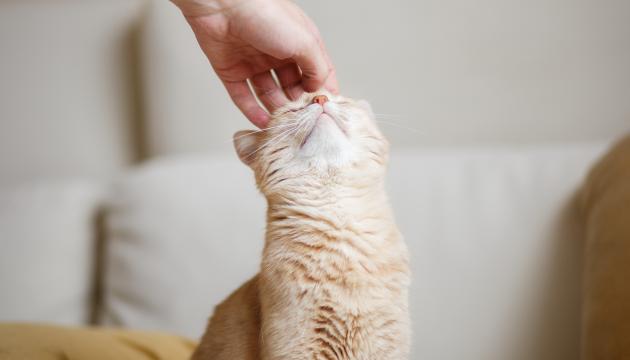

Training a Kitten: How to teach a kitten basic skills?
Training a kitten can greatly ease living together throughout your cat's life. The time and effort you invest in getting your kitten used to grooming and everyday situations will pay off in a smooth daily life with your cat.
In this article, we offer practical tips on the following areas of training a kitten:
Training a kitten: Recognizing own name
It is important to teach your kitten to recognise its own name. This helps when calling your cat or simply getting its attention.
You can teach name recognition by calling your kitten during positive moments, repeating the kitten’s name. Positive moments can include for example mealtimes or play sessions. However, remember not to use your kitten's name when it has done something wrong, and you are scolding the kitten.
Kitten training often involves a treat or two. So, grab our meaty cat treats, which contain no sugar or grains. Explore!

Training a kitten: Using the Litter Box
Cats are naturally clean animals and often learn to use the litter box from their mother. Even kittens as young as 3–4 weeks can follow their mother's example and use the litter box.
If your kitten is not house-trained when it arrives, you can teach the use of litter box by placing the kitten in it whenever it seems to need to go. A kitten may show signs like scratching the floor.
Establishing a routine can also help. Place your kitten in the litter box early in the morning, late at night, and after meals. Remember to stroke and praise your kitten when it uses the litter box.
In our selection, you can find cat litters made from 100% natural products, suitable for all silky paws. Discover the products!

Training a kitten: Being Alone
Separation anxiety, common in dogs, is no stranger to cats either. You can try to teach your kitten to handle alone time by following these four tips:
- Start Gradually
Begin by leaving your kitten alone for about 5–15 minutes and gradually increase the time. Make practising being alone part of your daily routine so there are enough practice sessions. For example, you can leave your kitten alone briefly when you fetch the post or take out the rubbish. It is also recommendable to occasionally spend time in another room away from your kitten.
- Create a Safe Space
Provide your kitten with a safe area where it feels comfortable. The space should include kitten’s own bed, a litter box, water, and food. Having familiar objects around helps your kitten feel secure when alone.
Kittens usually find their own ways to entertain themselves while alone – however, these activities may not always please the owner. Therefore, it is good to leave durable interactive toys that your kitten is allowed to play with.
- Leave Background Noise
You can leave the television or radio on at a low volume, so your kitten has familiar sounds during the time spent alone.
- Gradual Departure Routine
Do not make a big deal about leaving or returning. If you pamper your kitten before leaving, it can increase the kitten’s anxiety. Leave and return calmly without excessive attention. It would be unfair to expect your kitten to stay calm if you are acting excited.
Remember, not all cats enjoy being alone despite training. For particularly sociable cats, having another feline friend or a familiar cat sitter can help.

Training a kitten: Travelling in a Carrier
It is a good idea to make the carrier a familiar and pleasant part of your kitten's daily life. You can make the carrier accessible as a resting place, with a blanket that has familiar home scents.
The carrier can also be a hiding place during exciting hunting games. For example, you can toss a tempting cat treat into the carrier and let your kitten dash in after it. This way, getting used to the carrier becomes a fun and engaging game for your kitten!
Once the carrier becomes familiar, you can make the exercise a bit harder by momentarily closing the carrier's door – for example, while your kitten searches for the treat inside.
Before your kitten travels in the carrier, it is a good idea to practise lifting and carrying the carrier indoors. Initially, take your kitten in the carrier to another room, then carry them back to the starting room. Your kitten will feel safer knowing the carrier always returns to the starting place.
Your kitten should first travel in the carrier for short distances. You can also cover the carrier with a towel if it helps to calm your kitten.
Training a kitten: Claw Trimming
Before training your kitten for grooming procedures, you should get it used to being handled. Stroke your kitten in different places, such as paws, belly, and ears, so it gets used to human touch. You can reward the kitten by praising and offering cat treats.
Remember, you should not handle a cat by lifting by the scruff of the neck. This can be painful and even harm the cat.
Training your kitten for claw trimming is best timed when the kitten is tired. Give a go to the following steps to train your kitten to claw trimming:
- When your kitten is calmly in your lap, touch the claws.
- Once the kitten is used to the touch, bring out the nail clippers. Let your kitten sniff them and gradually touch kitten’s claws with the clippers. Remember to reward and praise your kitten.
- When the clippers become familiar, you can slowly start trimming the claws a little at a time.
- When your cat is older and the situation is familiar and safe, the cat can begin to choose when the claws are trimmed. Show the clippers to your cat, and if they touch them, you can proceed. Make the claw trimming position comfortable and reward your cat with a treat. Also, remember that your cat should have a good scratching post available.
Teaching a kitten to let you brush their teeth is also an important part of kitten training. Read more about cat’s teeth and dental care!

Training a kitten: Bathing
The number of baths and overall coat care needed varies between individual cats and breeds. Many cats clean themselves actively and do not need a bath unless they are noticeably dirty. Washing too often can dry out a cat's skin.
However, it is good to consider future bath times in kitten training, so your cat does not encounter the situation for the first time as an adult, feeling forced. You can accustom your kitten to bath time by following these five tips:
- Start with a Damp Cloth
Begin getting your kitten used to water gradually. Use a damp cloth or towel to wipe your kitten's coat.
- Warm and Safe Bath Time
When you start using more water, make sure it is lukewarm – not too cold or hot. Use a small basin or a shower with low water pressure and hold your kitten securely so it does not feel threatened. Keep the bathroom temperature comfortable so your kitten does not get cold.
When you start using shampoo, make sure it is intended for cats, as regular human or dog shampoo can be too harsh for a cat's skin. Apply the shampoo carefully and rinse thoroughly to ensure no residue remains in the fur.
Keep bath times short and calm. Speak soothingly and reward a well-behaved kitten with treats. This helps your kitten associate positive experiences with bath time.
- Avoid the Kitten's Face and Ears
Do not spray water directly onto your kitten's face or ears. You can wipe their face with a damp cloth after washing.
- Dry Thoroughly
Drying your kitten is an important part of the bath. Use a soft towel and gently pat your kitten dry.
- Give Your Kitten Time to Get Used to Bath Time
Be patient. Some cats take longer to get used to bathing, but with regular practice and positive experiences, most cats learn to tolerate it.
Training a kitten requires patience and consistency. Remember, great achievements are built on small successes!



